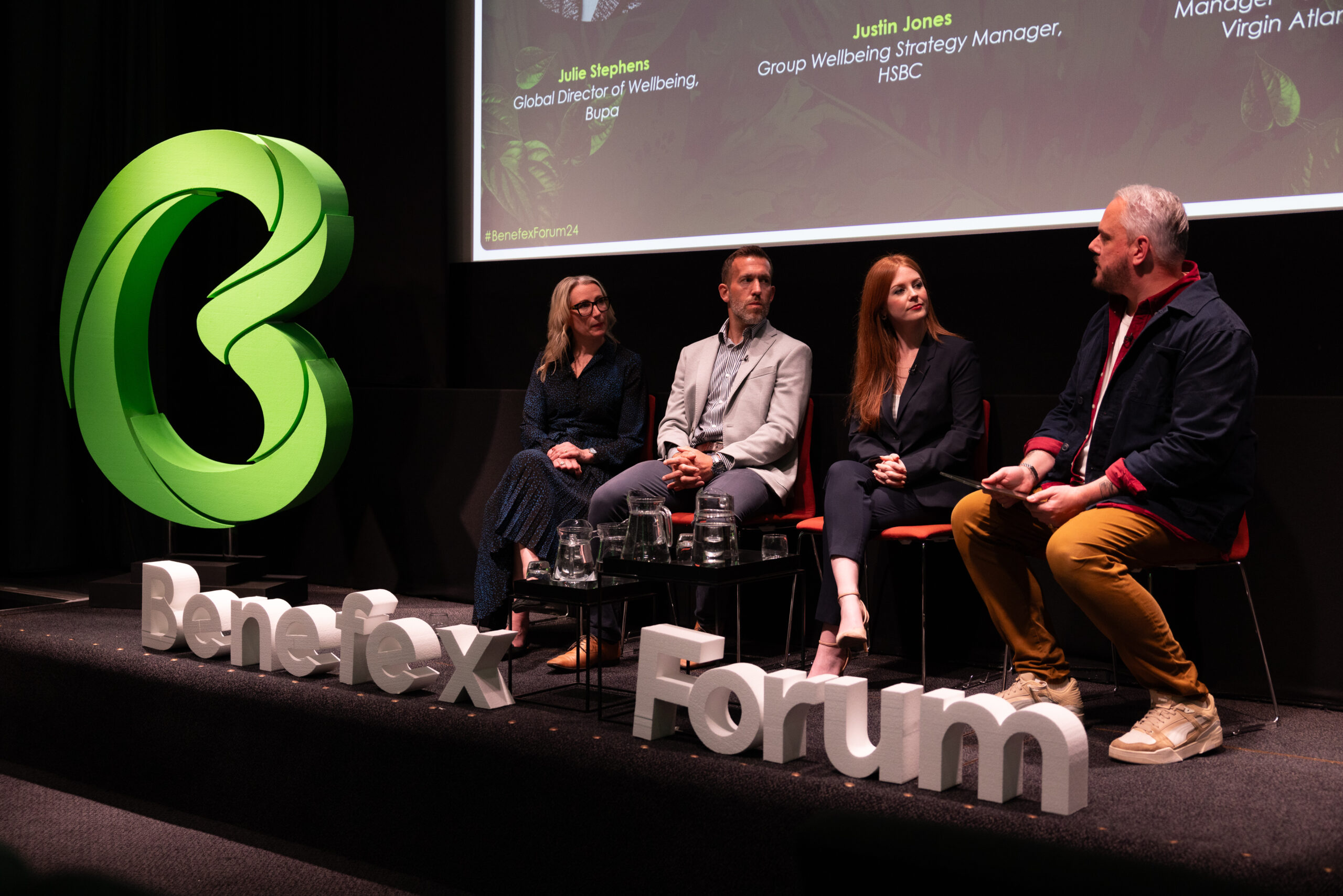
Employee Benefits
Introducing flexibility and choice into your benefits strategy: Insights from iPSL and Womble Bond Dickinson
14-10-2024
With 45% of HR and Reward leaders reporting that employees are demanding more flexibility and personalisation in benefits, the pressure is on for organisations to enhance their benefit offerings. However, more benefits options don’t necessarily equate to high engagement. So how can you make sure your flexible benefits scheme is meeting the needs of all employees?
HR and Reward leaders Ema Urlic, Head of Human Resources at iPSL, and David Wood, Reward and Analytics Manager at Womble Bond Dickinson (WBD), shared their insights, experiences, and learnings from building flexible benefit schemes.
Here are 5 top takeaways from their discussion…
Employees are demanding greater flexibility and choice in benefits – and HR and Reward teams are responding
With 48% of employees saying their benefits could be improved if employers offered more flexibility and choice, employers are adapting their strategies in response. Both iPSL and WBD have introduced flexible benefits to help them address the diverse needs of their employees.
Through a review of their existing benefits programme, Ema Urlic at iPSL identified a gap in employee engagement and satisfaction; despite already having a flexible benefits offering in place, it wasn’t accessible to all employees. As well as introducing 10 new or improved benefits, iPSL implemented a new flex fund to support benefits equity:
“The flexibility piece was the biggest challenge that we were looking to target. We realised that in our 2022 window, only 19% of our employee population within the lower pay ranges were actively taking up flexible benefits. So, we wanted to look at making our package truly inclusive for employees who didn’t have as much disposable income. As well as amending some of our core employer-funded benefits, we introduced a £300 flex fund for every employee – which was the same amount for every individual. And our engagement increased up to 92%!”
Employees want benefits that are personalised, can be selected year-round, and support wellbeing. David Wood at WBD highlighted the importance of catering to each employee:
“We want to create a benefit offering that people can flex to suit their lifestyle and particularly to suit their financial requirements. The whole point of having a successful benefits platform is so that people can personalise and customise it to their lifestyle and to suit their own individual circumstances.”
Creating a single home for flexible benefits allows employers to level up their experience
Like many organisations, iPSL’s benefits were scattered across different systems before they implemented a benefits tech platform, making access difficult for employees. To address this, they implemented a single, easily accessible platform for benefits where employees could find everything they were looking for in one place – and make selections:
“It was quite challenging to get that simplistic view of what was where, what we had on offer, how to access it. One of our key drivers was to make it as easily digestible and simple to use as possible.”
David also emphasised the importance of consolidating all benefits into a single accessible platform. With a platform now in place, WBD have been able to remind employees of available benefits they may have overlooked, while making their benefits more accessible, digestible, and customisable:
“The primary expectation from our employees was for their benefits to be easy to access, easy to find in one place, and more technologically available. We wanted the employee journey to feel as seamless and easy as possible.”
Define what success looks like for your flexible benefits strategy
As you might expect, both Ema and David shared that they look at typical metrics like employee logins, benefits selections and measure satisfaction with their flexible benefits offerings to gauge success. However, for both Ema and David, it’s important to look beyond just increases in selections.
“Last year we introduced a flex fund, and our engagement rate increased up to 92% within that first year of people actively going in and making physical selections to either flex up or down... The key part for us is to understand what that engagement looks like and make sure that it’s not stagnant.“ – Ema Urlic, Head of Human Resources at iPSL.
David defines success as employees’ ability to tailor their benefits to their needs and lifestyles, even if that doesn’t equate to higher take-up:
“I think what success looks like has changed in the last couple of years. I think a very straightforward way to measure the success of a flexible benefits annual window would be to look at the take up and the MI that’s available in the take up of benefits. But I think what demonstrates true engagement is the ability for people to make their own decisions and flex their own benefits based on their current lifestyle.
For a lot of people, being able to pause, cancel or reduce the cost of the benefits to add to their take home pay may well be the right decision for them. And although it makes it more difficult to measure, what that demonstrates is a high level of engagement from that individual because they know they can flex their benefits to put more money in their pocket.”
Don’t forget to communicate the value of benefits
A robust communication strategy was integral to the success of both companies’ benefits initiatives. At iPSL, Ema emphasised the need for clear, repeated messaging across various channels and ensuring accessibility for all employees.
“We worked with Benefex to introduce OneHub Home last year to provide that employee platform where they could not only get access to their benefits, and their reward and recognition tools, but also to allow colleagues to share information with each other. It was about making sure that everybody had access to the information and that the messages were in different places, but reinforced each other.”
David highlighted the importance of having continuous, varied communication throughout the year at WBD. This included using multiple channels like their intranet, TV screens in communal areas, and in-person visibility.
“There’s a lot of different ways to communicate and there’s no one perfect way that’s going to engage everyone – that’s why having a bit of a variety [of channels] is the best approach.”
And don’t forget two-way communication… regularly getting feedback from employees is important to ensure the package is meeting their needs, as Ema highlighted:
“We went through a diverse consultation process with internal stakeholders, speaking to colleagues via workshops, using our employee feedback surveys, and so on, to identify our biggest challenges.”
Secure buy-in for flexible benefits
Both Ema and David offered valuable advice for HR leaders at the start of their flexible benefits journey. Ema stressed the importance of clearly defining key drivers and objectives when building a benefits strategy from scratch.
David emphasised the importance of aligning flexible benefits with broader organisational goals. By linking the benefits strategy to tangible outcomes such as increased productivity and reduced turnover, WBD were able to present a strong case for the investment.
“Demonstrating that alignment of benefits with what we’re looking to achieve as a business in terms of our purpose, our vision, and aligning what we’re offering with our ethical framework and other core strategies is for me probably the biggest hook for our board.”
Creating a benefits strategy to suit everyone
To learn more about how you can introduce flexibility and choice into your benefits strategy, watch the full on demand webinar here.


